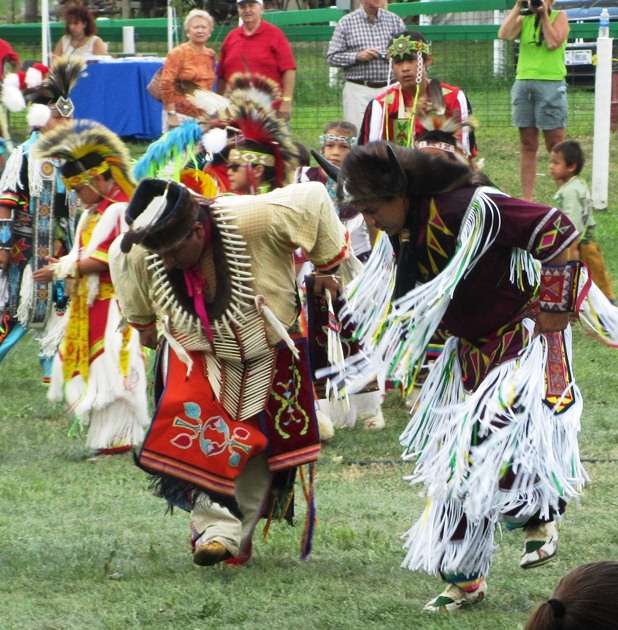|
|
Here is a quote from Old Fort Snelling, 1819-1858,
written by Marcus L. Hansen.
"It was at Iowa City that Major Woods heard that the inhabitants on
the Iowa, English, and Skunk Rivers had been making the loudest
complaints. Accordingly he started up the Iowa River to the
vicinity of Marengo. Here he learned that a few days before the
settlers near the town, becoming tired of having Indians about them,
armed themselves and by force broke up the Indian encampment. Only
one lodge remained, that on the lands of a farmer who gave permission to
three of the red men to live under his protection.
The total number of Indians, Major Woods reported, consisted of
five or six hundred Sacs and Foxes, Pottawattomies, and Winnebagoes.
Among these the Sacs and Foxes were the most numerous. They had by
treaty sold their lands some years earlier and had been removed to the
Missouri River; but they preferred their old home, and so had returned
in straggling bands, sometimes going back to the Missouri to get their
annuities. The Winnebagos were those who had escaped when the
tribe was being transferred to the new reservation north of Fort
Snelling.
The complaints against these Indians were that they destroyed a
great deal of timber, removed the surveyors' landmarks, killed the game,
annoyed the settlers, and that when intoxicated they were an actual
source of danger. Believing that these reasons were well founded,
Major Woods advised that the Indians be removed as soon as possible.
Conditions did not demand a winter campaign, but preparations should be
made for the removal during the early summer.
In the early part of April of the next year it was known that two
companies of infantry from Fort Snelling, and one company of dragoons
from Fort Gains had been detailed for the task. On the twelfth of
May the 'Highland Mary' left Fort Snelling, having on board the infantry
and cavalry and part of the equipment, while in tow was a barge full of
horses and mules. The soldiers were disembarked at Dubuque, whence
they followed the trail to Iowa City, along which they 'saw nothing
except the ravages of California emigration.'
Proceeding to the vicinity of Marengo, a council
was held with the Indians.
But the latter marched into the council ten abreast carrying their war
clubs and manifesting such a hostile disposition that is was impossible
for Major Woods to accomplish anything.
For a while it seemed that active military
operations would be necessary.
The Indians becoming convinced that this would be the result, and
fearing that all the expenses of the campaign would be deducted from the
annuities of the tribe, suggested to two men of the neighborhood–a Mr.
Steen and a Mr. Greenly–that they would go back to their homes if these
two men could be appointed their guides.
When Mr. Steen and Mr. Greenly broached the subject to Major
Woods he considered it thoughtfully, and finally an arrangement was
made. For every Indian who
left the Iowa River and was turned over to their agent west of the
Missouri River, the government was to pay three dollars and
fifty cents. Five
hundred dollars was to be advanced to pay for the provisions of the
party. Upon June 6th a
second council was held with the Indians, during which Major Woods
impressed upon Chief Poweshiek and his men the necessity of their
returning and the advisability of their doing it peacably.
During the month of July the Indians started upon
their journey. For several
days they encamped near Fort Des Moines, and on July 16th seventy of the
warriors, armed and painted, paraded on horseback through the streets of
the town to the public square where for an hour they danced for the
amusement of the two or three hundred interested spectators in the
frontier town.”

|
|




